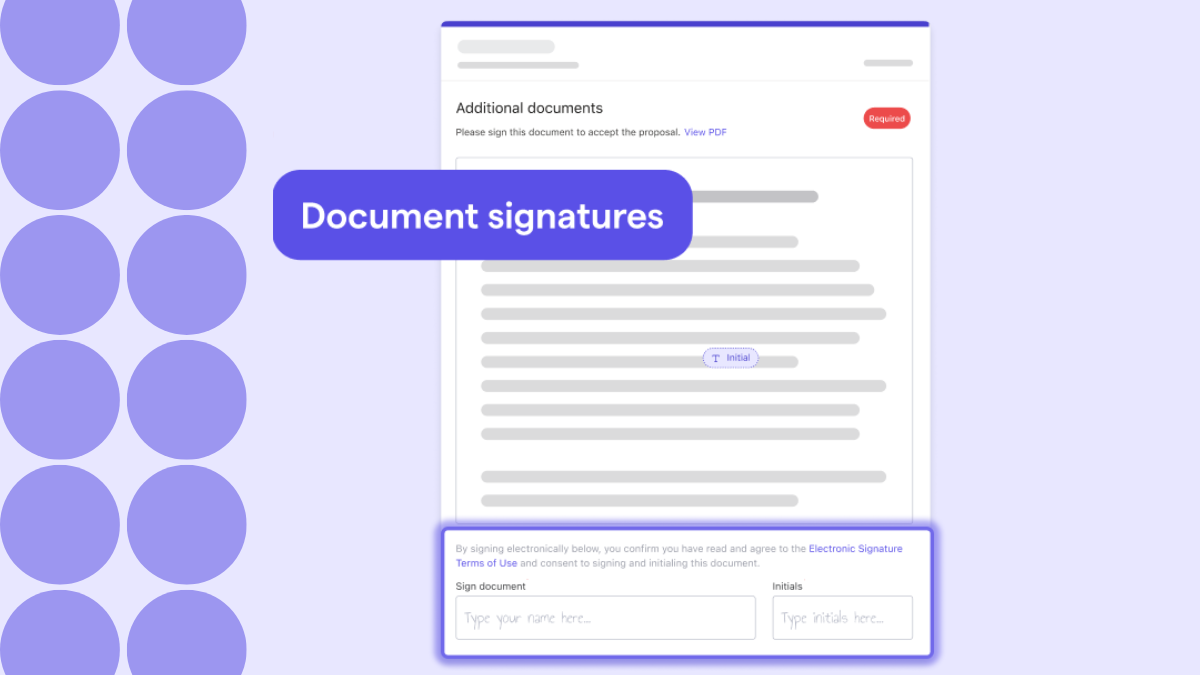Webinar recap: Mastering client renewal and disengagement strategies

Busy season is prime time for accounting and tax professionals and other professional services providers to reevaluate their client relationships.
Ignition's latest webinar in The Great Debate Series on Renewing vs firing clients, jumped headfirst into this timely topic. Here are the key takeaways:
Key takeaways
- Some clients may not be worth the trouble of holding on to. Evaluate your client base throughout the year, considering behavior, profitability, and other critical aspects for your firm when deciding whether to renew them or let them go.
- Effective communication is vital when parting ways with clients, whether due to behavior or other reasons.
- Implementing annual price increases can help maintain profitability and communicate expectations to clients.
- Leverage automation tools such as Ignition as well as your integrations to streamline client management, client communications, and engagement renewals.
- Ignition's features, such as revenue projection, engagement letter management, and bulk proposals, can enhance client management, efficiency, and profitability for your accounting and tax firm.
- The session also showcased a demo of how Ignition helps firms effectively manage these scenarios.
Moderated by Matt Kanas, Ignition's Managing Director (AMER), the webinar featured a panel of seasoned firm owners: Kristen Keats of Sherwood Tax & Accounting, Clint Bowers of Smart Business Concepts, Logan Graf of The Graf Tax Co, and Chris Williams of System Six.
Read on for highlights of their friendly but frank debate on when it's time to cut ties with clients versus when it’s time to renew and reinforce these relationships.

Navigating client relationships: Renew or release?
Client relationships, especially at renewal time, can be tricky.
Matt Kanas opened the debate by asking the panelists what criteria they use to determine if a client is worth keeping for another year. In other words, he asked, “Who do you need to fire?”
How do you decide which clients to fire?
Kristen Keats takes a proactive approach.
“We keep a list throughout the year,” she says. “So, if someone gets a little testy with us throughout the year or is creating problems for us, they go on the list. Then we evaluate it when we're renewing all the contracts.”
Her firm also does price increases.
“So, that will automatically weed some folks out... then we have an ideal client profile that we actually created as a team. So we're looking for clients that fit into that. As long as they're in that and they're not mean to us, then they’re winning, and they're able to continue with us,” she says.
Clint Bowers shared a more analytical approach.
“At first, [our criterion] was, ‘Are you paying us’? Yes? So, we're going to renew’,” he says.
“But at this point, we actually assign a client score through an internal algorithm, and that's based on a lot of factors,” he says. One of the factors is how challenging a client is to deal with. “And we look at that every six to 12 months.”
Other factors he and his team examine include responsiveness, profitability, and price sensitivity.
Kristen Keats’ method also resonated with Logan Graf. He says his team creates a list throughout the year of who is challenging to work with.
He also makes a list of his firm's pricing.
“If your pricing has fallen behind compared to current market rates or to our current pricing, then most likely we're going to have communication about that in the fall.”
For Chris Williams, there are two main criteria for terminating clients: margin and the 'challenging’ factor that Logan Graf references.
How do you fire a client?
Matt Kanas’ follow-up question centered on the process panelists go through when they want to – or must – fire a client.
For Kristen Keats, the approach depends on the reason for parting ways.
“If we're talking about bad behavior, usually there’s at least a warning conversation, and then there'll be a follow-up with what the consequences are – that they're not going to be our client anymore,” she says.
“Nothing is worth the headache, because any of my staff are worth more than any one client,” says Kristen Keats.
Because she acquired Sherwood Tax & Accounting three years ago and it wasn't a practice she’d built, some of the inherited clients didn’t fit her firm’s ideal client profile.
“The fees were just really, really low, so we actually had to get rid of a lot of clients en masse,” she says.
Her firm didn’t have the capacity to have individual conversations with each of those people, so she sent a letter with some referrals to other local firms – a kind disengagement, she hopes.
Referring back to bad behavior, Clint Bowers pointed out that once you call out clients on their behavior, the issue usually goes away immediately.
Kristen Keats agreed: “Honestly, sometimes that’s all it takes – calling it out and setting a boundary and then they can come into line. So that's why I think the warning is good.”
If a client doesn’t fall into line, Clint Bowers’ firm takes a firm stance: “We never give referrals for them to go find somebody else – ever!”
Chris Williams echoed Kristen Keats’ comments.
“[Losing a client] hurts the business, but it hurts way more if you keep some ... clients and then a team member quits or starts doing bad work. Our people are all of our businesses, so it's got to be ‘people first’,” Chris Williams says.
Related article: Do you need to disengage a client? Read How to fire a bad client (politely)
How effective is raising prices for filtering out toxic clients?
Moderator Matt Kanas then prodded his panelists on how long it took their firms to realize that getting rid of toxic clients was good for business.
Logan Graf shared the story of his dramatic price increase last year. “The ones that left were the ones that were paying the least amount and taking up the most work,” he says. “It was wild, and it was wildly successful for ‘indirectly’ firing those clients.”
For him, it came down to making a business decision about who his firm would work with.
“We're not running a charity… As business owners, we have to think about that and push past the emotions and know that we have to do the right thing for ourselves, for our family, and for our team,” says Logan Graf.
Kristen Keats agreed that it's hard but necessary to let some clients go.
“You just want that revenue to come in the door... You get that dopamine hit when somebody comes on as a client. You're so excited,” she says. “It's hard to let that go, but your future self will thank you for doing it along the way, no matter the size of your firm.”

How do firms effectively communicate and implement annual price increases?
Matt Kanas also broached the sometimes-touchy subject of price adjustments and smooth client renewals – and the panelists’ tactics for this.
“What strategies have you put in place to help facilitate those discussions with your clients? Do you even have a discussion? Or, do you just press a button and send out the price increase like Netflix, Disney, and other streaming services did to me this week?”
Streaming services aside, Kristen Keats’ approach hinges on good communication.
“I do a video newsletter that I send out to all the clients... as much as possible, we're trying to automate.”
Logan Graf’s proposals communicate the price increase on the first screen.
“Expect price increases every year.” He started doing that before 2020 [and COVID-19], when he told his clients to expect a 3% to 5% increase every year to keep up with inflation.
He falls firmly in the camp that believes in increasing prices every year – no matter what – but reiterates how important it is to communicate that.
He also addresses supply and demand.
“Accountants are definitely low in supply, and demand is not letting up either, so the economics of that allows us to increase our pricing,” he says.
He stresses, too, not to worry too much about client reactions to huge price increases.
“Usually, it's not a bad experience unless you're charging really, really low market rates and you're trying to catch up… it's not as bad as you think. Just go for it.”
Thinking about increasing your prices this tax season? See how easy it is with Ignition.
What features does Ignition offer for easier client management this tax season?
Brad Weiler, Ignition’s product expert, showcased how Ignition streamlines client management during the busy tax season. Here's a quick look at what stood out:
- Seamless software integrations. He showed off Ignition's integration capabilities with leading ledger software such as QuickBooks Online and Xero, for automated invoicing and reconciliation to ensure you get paid on time, every time. He also covered payroll processing with Gusto, which can add further efficiency to your routine tasks.
- Intuit ProConnect integration. Brad highlighted Ignition’s newly launched integration with Intuit ProConnect, which could save you hours this tax season. It allows you to selectively import clients from ProConnect into Ignition based on return type, and create and send tailored tax proposals to multiple ProConnect clients in bulk simultaneously, if you choose.
- Dashboard insights. In Ignition’s business dashboard, he pointed out how easy it is to see revenue projections, so you have a clear view of your monthly and annual financial forecasts. Tracking payments is also simple, so you always have a clear picture of your cash flow.
- Pipeline view for engagement letters. One of the key functions Brad called to attention was the Pipeline view, for managing engagement letters. With it, you can effortlessly view, sort, and renew past engagements in bulk, streamlining a time-consuming process and saving hours in the process.
- Easily increase your prices. Brad urged viewers to be on the lookout for Ignition’s price increase feature. It allows you to effortlessly apply a percentage-based price increase when you’re renewing your client engagements.
- Capture revenue opportunities instantly. And when clients make out-of-scope requests this tax season, you can quickly and easily bill clients for these using the Instant Bill feature, without the need for a formal proposal.

Ignition: Your tool for smarter client management and revenue growth
It's clear that managing client relationships, especially challenging ones, requires a blend of strategic thinking, clear communication, and the right tools.
This is where Ignition steps in as a game-changer. With features like automated engagement letters, streamlined proposal creation, and efficient client management, Ignition empowers you to make informed decisions about client retention and pricing strategies.
With Ignition, you can not only enhance efficiency and profitability, but also gain valuable insights for making those tough calls on client management. Watch an instant demo now, and see how Ignition can help you navigate the complexities of client relationships with confidence and ease this tax season.



